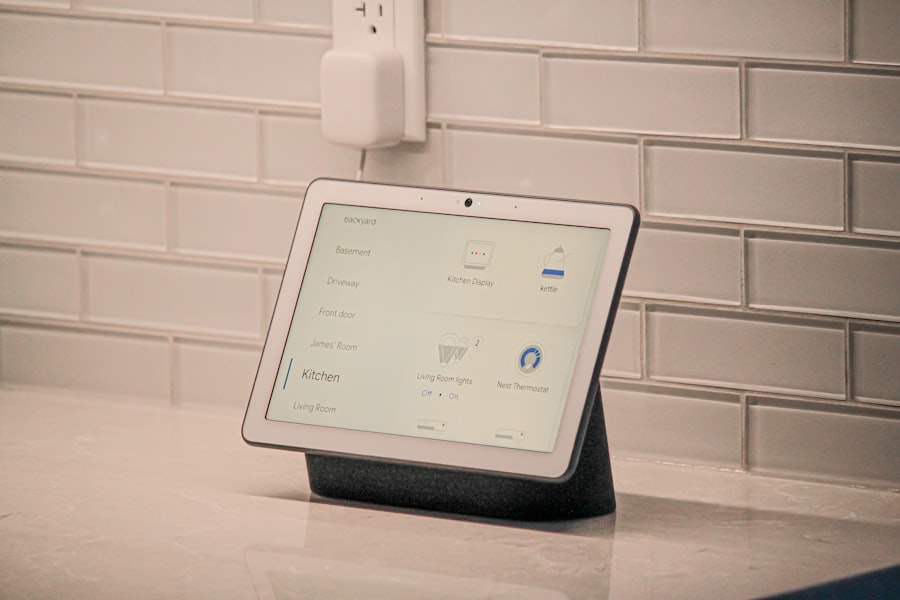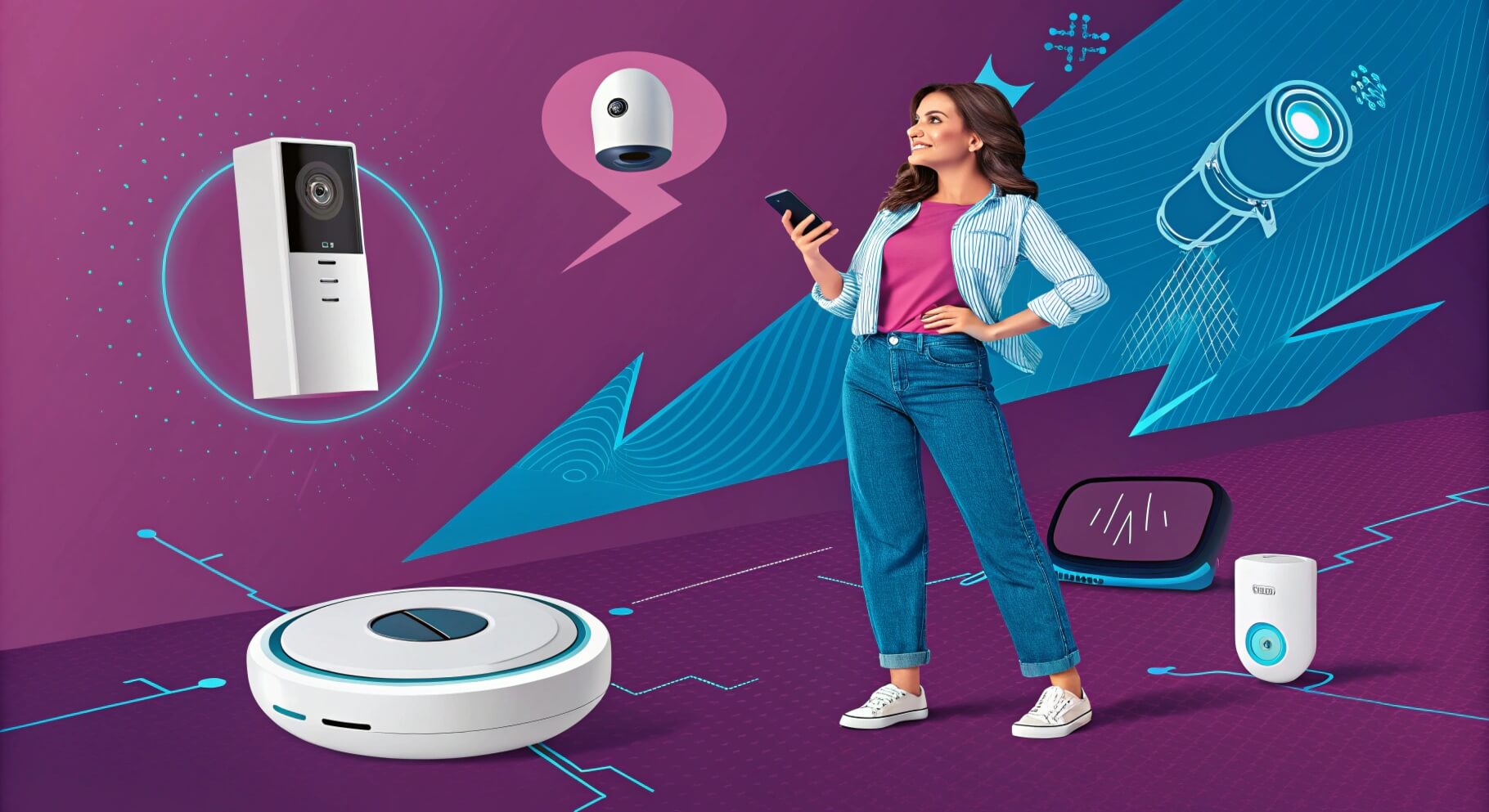The advent of smart home technology has revolutionized the way we interact with our living spaces. Smart home devices, which encompass a wide range of products designed to enhance convenience, security, and energy efficiency, have become increasingly popular among homeowners. These devices are interconnected through the Internet of Things (IoT), allowing users to control various aspects of their homes remotely via smartphones, tablets, or voice commands.
The integration of smart technology into everyday life not only simplifies routine tasks but also provides valuable insights into energy consumption and home security. As the market for smart home devices continues to expand, consumers are presented with an array of options tailored to meet diverse needs. From smart thermostats that optimize heating and cooling systems to advanced security cameras that monitor property in real-time, these devices offer innovative solutions for modern living.
The growing emphasis on sustainability and energy efficiency has further propelled the adoption of smart technology, as homeowners seek ways to reduce their carbon footprint while enjoying the benefits of a connected lifestyle. This article delves into various categories of smart home devices, exploring their functionalities, advantages, and the impact they have on daily living.
1. Smart Thermostat for Energy Efficiency
Smart thermostats represent a significant advancement in home climate control technology. Unlike traditional thermostats that require manual adjustments, smart thermostats learn from user behavior and preferences to optimize heating and cooling schedules automatically. For instance, a smart thermostat can detect when occupants are home or away and adjust the temperature accordingly, ensuring comfort while minimizing energy consumption.
This feature not only enhances user convenience but also contributes to substantial savings on energy bills. One of the most notable examples of smart thermostat technology is the Nest Learning Thermostat. This device utilizes machine learning algorithms to adapt to the homeowner’s routines over time.
After a brief learning period, it can predict when to heat or cool the home based on past behavior, weather forecasts, and even occupancy patterns. Additionally, many smart thermostats offer remote access through mobile applications, allowing users to adjust settings from anywhere. This capability is particularly beneficial for those who travel frequently or want to ensure their homes are at an optimal temperature before returning from work or vacation.
2. Smart Security Cameras for Home Safety

In an era where home security is paramount, smart security cameras have emerged as essential tools for safeguarding properties. These devices provide real-time video surveillance and can be accessed remotely via smartphones or computers. Many models come equipped with features such as motion detection, night vision, and two-way audio, allowing homeowners to monitor their premises and communicate with visitors or intruders directly through the camera.
A prime example of effective smart security camera technology is the Ring Video Doorbell. This device not only captures high-definition video footage but also sends instant alerts to users when motion is detected at their front door. The ability to view live feeds and recorded footage enhances situational awareness and allows homeowners to respond promptly to potential threats.
Furthermore, integration with other smart home devices, such as smart locks and alarms, creates a comprehensive security ecosystem that can be managed from a single platform.
3. Smart Lighting for Convenience and Energy Savings
Smart lighting systems have transformed the way we illuminate our homes, offering both convenience and energy efficiency. These systems allow users to control lighting remotely or set schedules for when lights should turn on or off. With features such as dimming capabilities and color temperature adjustments, smart lighting can create the perfect ambiance for any occasion while reducing energy consumption.
Philips Hue is a leading brand in the smart lighting market, providing a wide range of products that can be customized to fit individual preferences. Users can choose from millions of colors and shades of white light, enabling them to tailor their lighting environment according to mood or activity. Additionally, Philips Hue lights can be integrated with voice assistants like Amazon Alexa or Google Assistant, allowing for hands-free control.
This level of automation not only enhances convenience but also contributes to energy savings by ensuring that lights are only used when needed.
4. Smart Locks for Enhanced Home Security
Smart locks represent a significant leap forward in home security technology, offering keyless entry options that enhance both convenience and safety. These locks can be controlled remotely via smartphone apps, allowing homeowners to grant access to guests or service providers without needing to be physically present. Many smart locks also feature advanced security measures such as encryption and tamper alerts, providing peace of mind for users.
The August Smart Lock is a notable example of this technology, allowing users to retrofit their existing deadbolts without replacing them entirely. This feature makes it an attractive option for those who want to maintain their current hardware while enjoying the benefits of smart technology. Users can create temporary access codes for visitors or service personnel, which can be set to expire after a specified time.
This level of control not only enhances security but also eliminates the need for physical keys that can be lost or stolen.
5. Smart Smoke and Carbon Monoxide Detectors for Safety

Safety is a top priority in any home, and smart smoke and carbon monoxide detectors play a crucial role in protecting families from potential hazards. Unlike traditional detectors that emit a loud alarm when smoke or carbon monoxide is detected, smart detectors provide additional features such as mobile alerts and real-time monitoring. This capability allows homeowners to respond quickly in emergencies, even when they are not at home.
The Nest Protect is a leading example of a smart smoke and carbon monoxide detector that combines advanced technology with user-friendly features. It offers voice alerts that specify the type of danger detected and its location within the home. Additionally, the device conducts self-tests to ensure functionality and sends notifications if maintenance is required.
By integrating with other smart home devices, such as security systems and voice assistants, Nest Protect enhances overall safety by providing comprehensive monitoring and alerts.
6. Smart Voice Assistants for Home Automation
Smart voice assistants have become central hubs for home automation, enabling users to control various devices through simple voice commands. These assistants can manage everything from lighting and temperature settings to security systems and entertainment options, creating a seamless experience for homeowners. The convenience of voice control allows users to multitask effectively while maintaining control over their environment.
Amazon Alexa and Google Assistant are two prominent players in this space, each offering compatibility with a wide range of smart home devices. For instance, users can instruct Alexa to dim the lights while watching a movie or ask Google Assistant to lock the front door before going to bed. The ability to create routines—such as turning off all lights and locking doors at bedtime—further enhances the automation experience.
As more devices become compatible with these platforms, the potential for creating personalized smart home ecosystems continues to grow.
7. Smart Plugs and Outlets for Device Control and Energy Monitoring
Smart plugs and outlets offer a simple yet powerful way to upgrade non-smart appliances and gain greater control over home energy usage. These devices allow users to remotely switch electronics on or off, set automated schedules, and even monitor power consumption through companion apps. Whether it’s turning off a coffee maker you forgot about or scheduling lamps to turn on at dusk, smart plugs bring both convenience and peace of mind. Models like the TP-Link Kasa Smart Plug or Wemo Smart Plug integrate seamlessly with voice assistants like Alexa and Google Assistant, enabling voice control and routine-based automation. By providing insights into energy usage, smart plugs also empower homeowners to reduce unnecessary consumption and lower electricity bills—making them a practical addition to any connected home.
Conclusion and Recommendations for Smart Home Devices
As we navigate an increasingly connected world, the benefits of integrating smart home devices into our lives become more apparent. From enhancing energy efficiency with smart thermostats to improving safety with advanced security cameras and detectors, these technologies offer practical solutions that cater to modern living demands. Homeowners looking to invest in smart technology should consider their specific needs and preferences when selecting devices.
For those prioritizing energy savings, starting with a smart thermostat and smart lighting system can yield immediate benefits on utility bills while enhancing comfort levels at home. Meanwhile, individuals focused on security may find value in installing smart locks and security cameras that provide peace of mind through real-time monitoring and remote access capabilities. Ultimately, the right combination of smart home devices can create a more efficient, secure, and convenient living environment tailored to individual lifestyles.
If you’re looking to enhance your home with smart devices, you may also be interested in exploring some DIY home aesthetic decor ideas. Check out this article here for some creative and budget-friendly ways to spruce up your living space.
FAQs
What are smart home devices?
Smart home devices are electronic devices that can be controlled remotely and are often connected to a home network. They can be used to automate and monitor various aspects of a home, such as lighting, heating, security, and entertainment.
What are some examples of smart home devices?
Some examples of smart home devices include smart thermostats, smart lighting systems, smart locks, smart security cameras, smart speakers, smart plugs, and smart TVs.
What are the benefits of installing smart home devices?
Installing smart home devices can provide several benefits, including increased convenience, energy savings, improved home security, and enhanced entertainment options. They can also help homeowners monitor and control their homes remotely.
Are smart home devices secure?
Smart home devices can be secure if proper security measures are taken, such as using strong passwords, keeping software up to date, and using secure Wi-Fi networks. However, there have been instances of smart home devices being hacked, so it’s important to be vigilant about security.
Do smart home devices require a smart home hub?
Some smart home devices require a smart home hub to function, while others can connect directly to a home network. A smart home hub can help centralize control of multiple smart devices and enable them to work together seamlessly.
Can smart home devices be controlled remotely?
Yes, many smart home devices can be controlled remotely using a smartphone or tablet, as long as they are connected to the internet. This allows homeowners to monitor and adjust their smart devices from anywhere with an internet connection.
Are smart home devices compatible with voice assistants?
Many smart home devices are compatible with popular voice assistants such as Amazon Alexa, Google Assistant, and Apple Siri. This allows users to control their smart devices using voice commands.

